

Shane O'Donoghue
2025 Nissan Ariya Nismo review: Quick drive
6 Days Ago
It's not quite production ready, but you're looking at the new Mitsubishi Triton in concept form. A reveal is coming soon.

Contributor
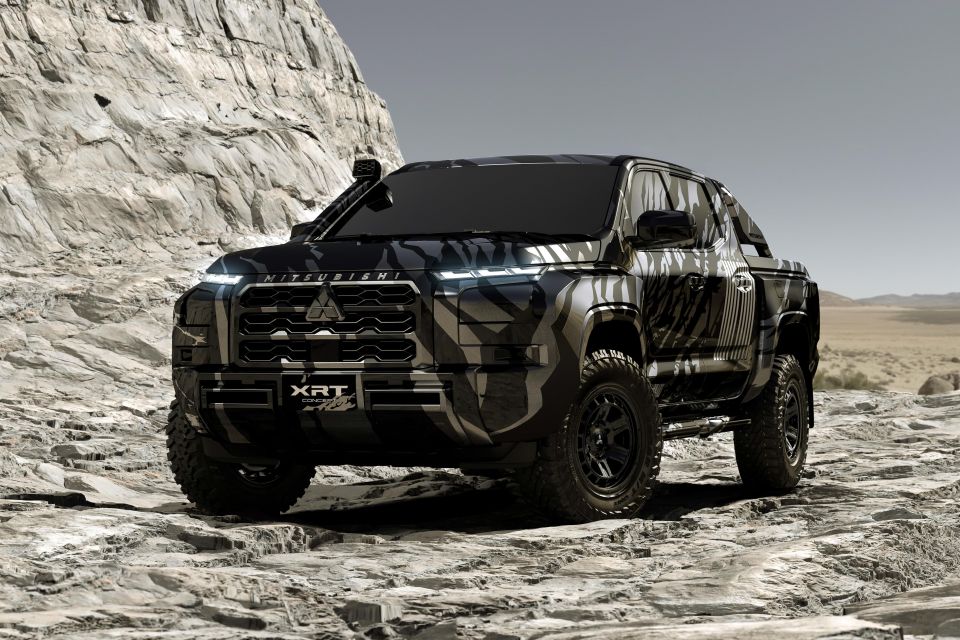

Contributor
Mitsubishi has offered its first official look at the next-generation Triton ute, in the form of a tough concept car.
Revealed at the Bangkok motor show, the XRT Concept appears to be a pumped- and liveried-up version of an otherwise production-ready ute. It will debut before the end of this month in concept form, with the first production models to hit Thailand sometime during ‘fiscal 2023’ (March ’23 to April ’24 inclusive) before rolling out around the world.
“The all-new Triton is going through final touch-ups in preparation for its release, as we have performed rigorous endurance tests around the world while also incorporating the know-how gained from rally activities,” said Takao Kato, Mitsubishi Motors president and CEO.
As part of the Renault-Nissan-Mitsubishi Alliance’s leader-follower model, Mitsubishi is leading development of the Triton, with the next Nissan Navara set to share underpinnings but different styling.
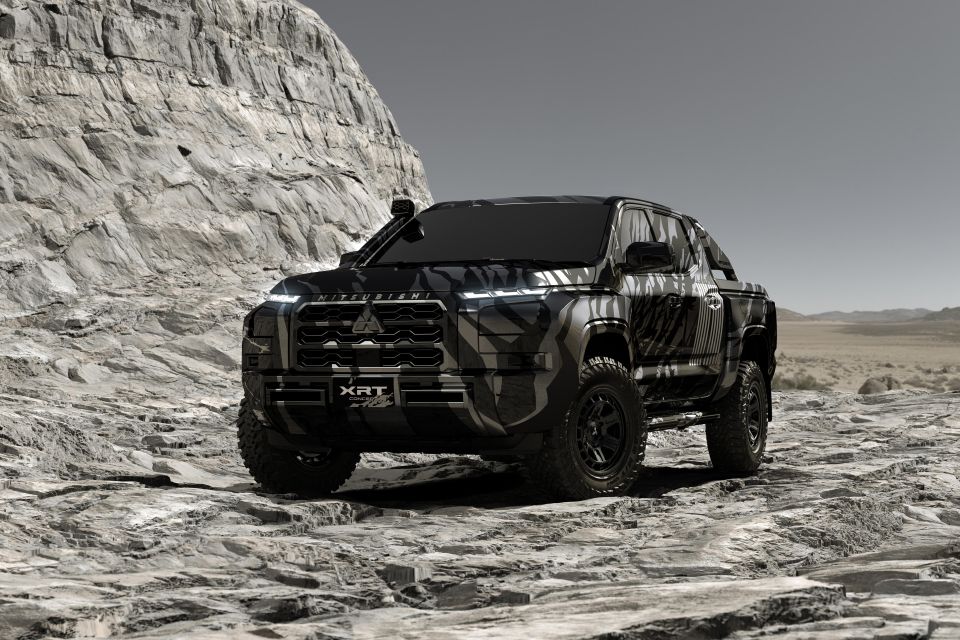
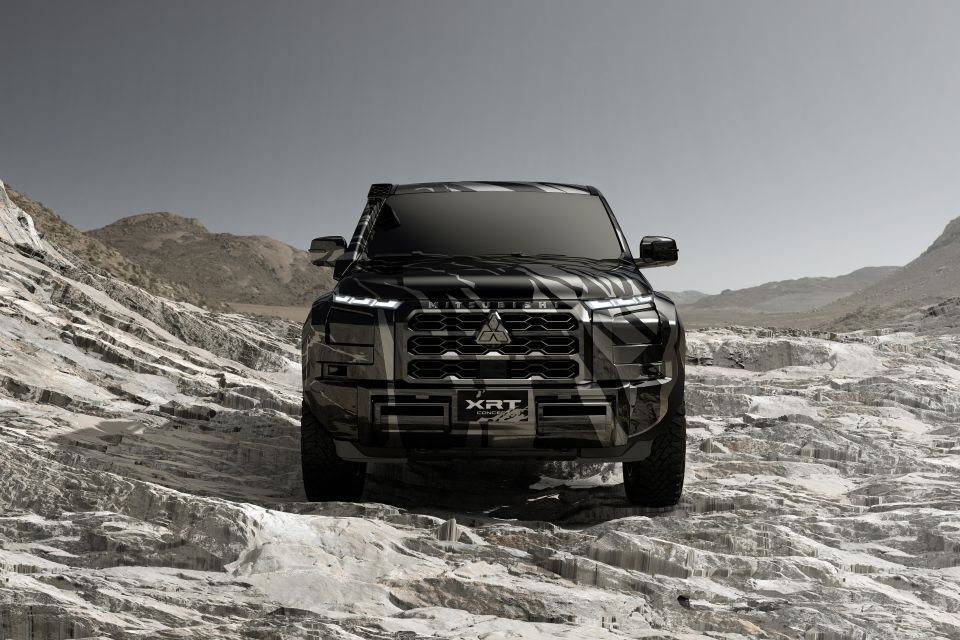
Under the bonnet, the Triton will house a “next generation diesel”. There has also been a lot chatter about electrification, given Mitsubishi is leading plug-in hybrid development for the Alliance.
The mooted next-gen Triton PHEV would line-up against the PHEV version of the Ford Ranger, confirmed for launch by 2024 with a focus on Europe’s stringent CO2 caps.
The XRT has a tough front end with a version of the grille and headlight array that features on the current Outlander, while the bonnet and guards are swollen beneath that black camouflage.
Those oversized tyres and black wheels are a nod to the Triton AXCR racer. There’s a snorkel up front as well.


Down back, the XRT features tail lights that match what we’ve seen from Triton prototypes, along with a tough set of sports bars and a pair of spare tyres. Don’t expect customer cars to feature those Dakar-ready wheels in the tray, of course.
Following the Bangkok motor show, our next look at the next-generation Triton will be at the Asia Cross Country Rally in Thailand and Laos during August 2023.
Mitsubishi is gearing up for a big few years of new products. It has confirmed it will sell only hybrids, plug-in hybrids, and EVs by 2035, although it hasn’t set a date to go EV-only.
Leading the move from a petrol- and diesel-driven range to one that puts electric power in the spotlight will be the plug-in hybrid flagship of the current Mitsubishi range in Australia, the Outlander PHEV.
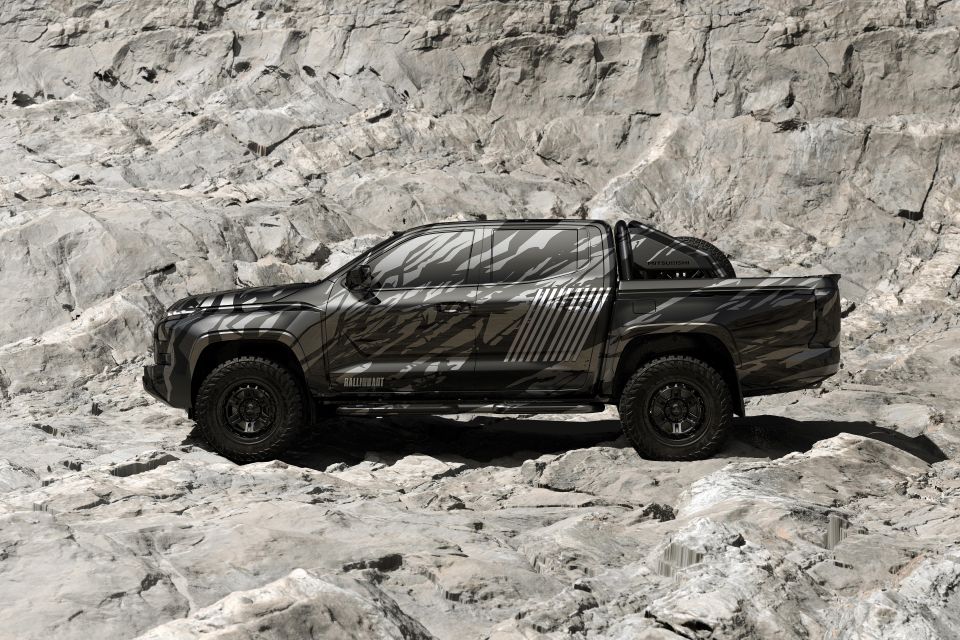
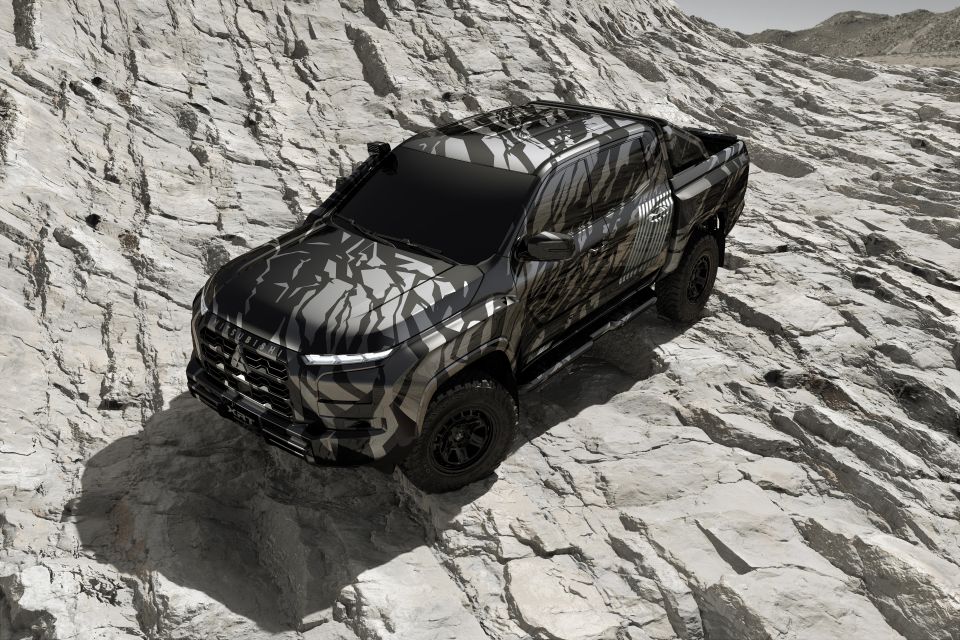
Mitsubishi has committed to offering it in more markets globally as a first step, before rolling out an expanded range of electric vehicles.
It plans to offer an electric ute as part of its range, along with a two-row electric SUV and a new “Alliance BEV” built on underpinnings shared with its Renault and Nissan corporate cousins.
What form the ute will take isn’t clear. The vehicle concealed under a sheet in the product roadmap is different to the Triton silhouette on show, suggesting the EV ute could be a Mitsubishi version of the Nissan Surf-Out Concept that we saw earlier in 2023.
Both SUVs are possible candidates for an Australian introduction; not something we can say for the electric kei car also teased as part of the latest Mitsubishi product roadmap.

On the internal-combustion side of things, the most relevant vehicles revealed in the latest roadmap are the Triton ute (due soon) and the related “PPV”, or pickup passenger vehicle, likely to replace the current Pajero Sport around 2025.
The current Triton was given a major overhaul in 2019, but was originally launched in 2015. The new model will share more with the Nissan Navara, as Nissan and Mitsubishi look to more closely collaborate on next-generation vehicles.
There’s also a new three-row SUV in the works for 2024 or 2025.
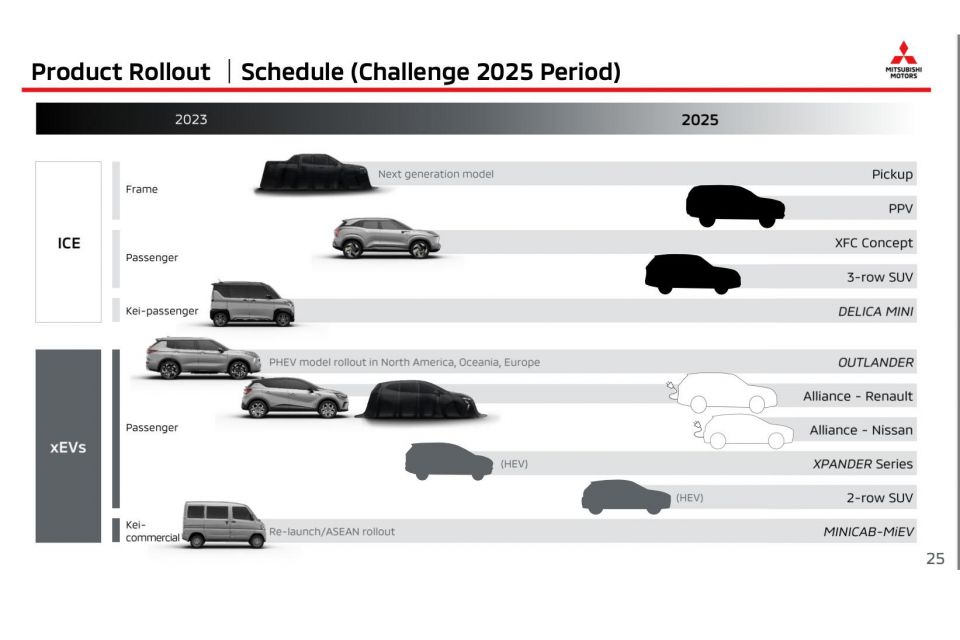
Unlike the ute-based Pajero Sport, this mysterious seven-seater is thought to be a rival to the Toyota Kluger and Mazda CX-9 – potentially sharing its underpinnings with the Nissan Pathfinder.
A hybrid two-row SUV is coming at some point in 2023 or 2024, along with a new Colt city hatchback based on the Renault Clio. We’ve already seen the Mitsubishi ASX replaced in Europe by a rebadged Renault Captur, but its global prospects are less clear.
Where expert car reviews meet expert car buying – CarExpert gives you trusted advice, personalised service and real savings on your next new car.
Scott Collie is an automotive journalist based in Melbourne, Australia. Scott studied journalism at RMIT University and, after a lifelong obsession with everything automotive, started covering the car industry shortly afterwards. He has a passion for travel, and is an avid Melbourne Demons supporter.


Shane O'Donoghue
6 Days Ago


Anthony Crawford
5 Days Ago


Matt Campbell
4 Days Ago


James Wong
3 Days Ago


Max Davies
1 Day Ago
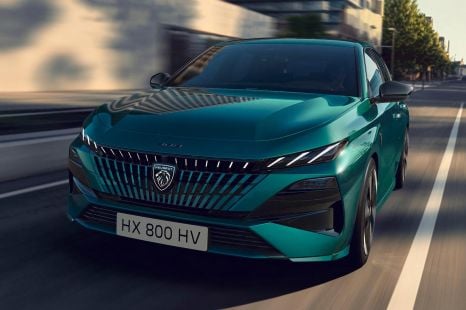

Derek Fung
6 Hours Ago